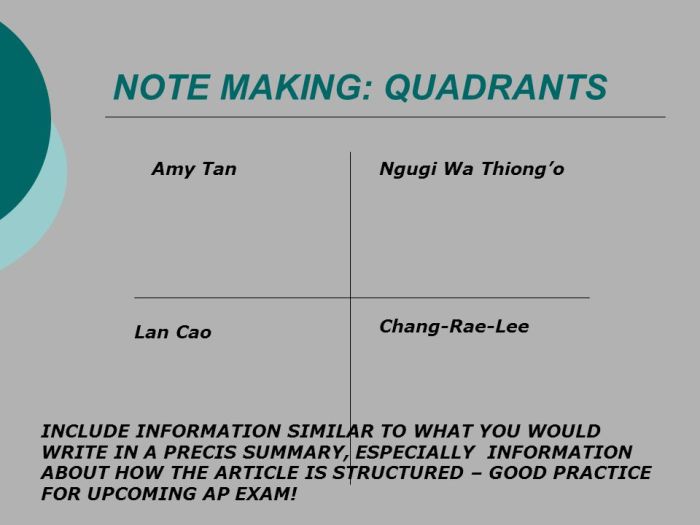Aria memoir of a bilingual childhood – Aria: A Bilingual Childhood Explored is a memoir that delves into the unique experiences of growing up with two languages. The author’s journey as a bilingual individual shapes their cultural identity, linguistic abilities, and sense of belonging.
This memoir provides an intimate look into the challenges and joys of navigating two linguistic worlds, offering insights into the complexities of language, culture, and identity.
Personal Narrative

The author’s childhood experiences as a bilingual individual were highly influential in shaping their cultural identity and worldview. Growing up with exposure to two languages allowed them to develop a unique perspective and understanding of the world around them.
Language and Cultural Identity
The author’s ability to speak and understand two languages provided them with a deep connection to both cultures associated with those languages. They were able to appreciate the nuances and subtleties of each language, and this in turn gave them a deeper understanding of the cultural values and perspectives of both cultures.
- For example, the author’s ability to speak Spanish allowed them to connect with their extended family in Mexico and to fully participate in the traditions and customs of their Mexican heritage.
- Similarly, their ability to speak English allowed them to fully integrate into American society and to participate in the cultural activities and events of their American community.
Navigating Two Linguistic Worlds
While the author’s bilingualism brought many benefits, it also presented some challenges. They often had to navigate between two linguistic worlds, and this could sometimes be difficult.
- For example, the author sometimes had to translate for their parents or other family members who did not speak English, which could be a time-consuming and stressful task.
- Additionally, the author sometimes felt like they had to suppress one part of their identity in order to fit in with the dominant culture.
Despite these challenges, the author’s bilingualism ultimately proved to be a valuable asset. It allowed them to develop a unique perspective on the world and to appreciate the richness and diversity of human culture.
Linguistic Influences
The author’s bilingual upbringing significantly shaped their English writing, influencing their vocabulary, grammar, and sentence structure. Their native language provided a unique linguistic foundation that enriched their literary voice.
Vocabulary
- The author’s native language expanded their English vocabulary, introducing words and phrases that conveyed nuances not easily expressible in English.
- Bilingualism allowed them to draw upon both languages, creating a richer and more expressive vocabulary.
Grammar
- The author’s bilingualism influenced their grammar, particularly in sentence structure and word order.
- Certain grammatical constructions from their native language subtly influenced their English writing, adding depth and complexity to their sentences.
Sentence Structure
- The author’s bilingualism impacted their sentence structure, allowing them to experiment with varied sentence lengths and constructions.
- Their writing exhibited a fluidity and rhythm that reflected the influence of both languages, creating a unique and engaging literary style.
Cultural Perspectives: Aria Memoir Of A Bilingual Childhood

Growing up bilingual, the author observed striking cultural differences between their two linguistic communities. The author’s first language community, influenced by a collectivist culture, emphasized family, group harmony, and respect for authority. In contrast, the second language community, rooted in an individualistic culture, prioritized personal autonomy, self-reliance, and critical thinking.
Bridging Cultural Gaps
The author’s bilingualism served as a bridge between these contrasting cultures. By understanding the nuances of both languages, the author could navigate the social norms and expectations of each community effectively. This ability fostered mutual understanding and facilitated meaningful connections.
Cultural Immersion and Assimilation
The author’s experiences with cultural immersion and assimilation were complex and multifaceted. Initially, the author felt a sense of cultural dissonance as they struggled to reconcile the values and beliefs of their two linguistic communities. However, over time, the author gradually assimilated into both cultures, adopting aspects of each while maintaining their own unique identity.
Identity and Belonging
Navigating a bilingual childhood presents unique challenges and rewards in shaping one’s sense of self. The author grapples with the complexities of defining their identity as an individual who straddles two linguistic and cultural worlds.
The Role of Language in Shaping Identity
Language becomes an integral part of the author’s identity, influencing their thoughts, feelings, and interactions. The ability to express themselves in both languages allows them to connect with different communities and cultures. However, it also creates a sense of duality, where they may feel torn between different linguistic and cultural identities.
Belonging and Community
The author explores the role of language in shaping their sense of belonging and community. They find solace and connection within bilingual communities, where they can share their experiences and perspectives with others who understand their unique challenges. However, they also face instances of exclusion and discrimination from monolingual communities, highlighting the challenges of navigating different linguistic and cultural landscapes.
Discrimination and Prejudice
The author confronts the reality of discrimination and prejudice based on their linguistic background. They recount experiences of being marginalized, ridiculed, or stereotyped due to their accent or language proficiency. These experiences shape their understanding of their place in society and lead them to question their sense of belonging.
Language and Memory

Language plays a pivotal role in preserving and shaping the author’s childhood memories in Memoir of a Bilingual Childhood. The author’s bilingualism significantly influences their ability to recall and interpret past experiences, adding depth and complexity to their memoir.
Emotional and Psychological Significance
Language holds deep emotional and psychological significance in the author’s memoir. Certain words, phrases, and memories are inextricably linked to specific emotions and experiences, evoking vivid recollections and profound feelings. The author’s ability to navigate between two languages allows them to access a broader range of emotions and perspectives, enriching the emotional landscape of their memoir.
Education and Language Acquisition

As a bilingual learner, the author’s educational experiences were marked by both challenges and opportunities. The author’s early exposure to multiple languages at home facilitated a natural acquisition of both languages. However, formal language education in school presented unique challenges as the author navigated the complexities of academic language and literacy in both languages.
Challenges in Bilingual Education
The author faced several challenges in bilingual education. One significant challenge was the need to develop academic literacy in both languages. The author found it difficult to transfer literacy skills from one language to another, leading to a sense of linguistic insecurity in certain academic domains.
Additionally, the author experienced a lack of consistent support for bilingualism in the educational system, which hindered their ability to fully develop their linguistic potential.
Influence of Bilingualism on Academic and Professional Pursuits
Despite the challenges, the author’s bilingualism had a profound influence on their academic and professional pursuits. The author’s ability to navigate multiple languages and cultures enabled them to pursue research and career opportunities that bridged linguistic and cultural boundaries. Their bilingualism also fostered a deep appreciation for linguistic diversity and a commitment to promoting multilingualism in education and society.
Importance of Language Education for Bilingual Individuals, Aria memoir of a bilingual childhood
Language education is crucial for bilingual individuals to fully develop their linguistic and academic potential. Schools play a vital role in supporting the linguistic development of bilingual learners by providing access to high-quality language instruction, creating inclusive learning environments, and fostering a positive attitude towards bilingualism.
By empowering bilingual individuals with the linguistic tools they need, schools can prepare them for success in both academic and professional settings.
Literary Analysis
The author of “Memoir of a Bilingual Childhood” employs a range of literary techniques to convey their experiences as a bilingual individual, including figurative language, symbolism, and narrative structure. These techniques contribute to the memoir’s richness and depth, allowing the author to explore the complexities of their bilingual identity.
Figurative Language
The author uses figurative language to create vivid and memorable images that convey the emotional and psychological experiences of being bilingual. For example, they describe the feeling of being “trapped between two worlds” and “living in a constant state of translation.”
These metaphors effectively capture the sense of displacement and alienation that can accompany bilingualism.
Symbolism
The author also uses symbolism to represent the different aspects of their bilingual identity. For example, the recurring image of the “border” symbolizes the division between the author’s two languages and cultures. The author’s struggle to cross this border represents their struggle to reconcile their two identities.
Narrative Structure
The memoir’s narrative structure is also significant. The author uses a non-linear narrative to explore the different stages of their bilingual development. This structure allows the author to provide a more nuanced and comprehensive account of their experiences.
Social and Political Context
The memoir is set against the backdrop of the mid-20th century United States, a period marked by significant social and political transformations. During this time, the country grappled with issues of racial and ethnic discrimination, as well as the growing awareness of the importance of language and cultural diversity.
The author’s experiences as a bilingual individual provide a unique lens through which to examine these broader societal attitudes. As a child of immigrant parents, the author navigated a world where their native language and culture were often marginalized. This experience mirrored the struggles faced by many other bilingual individuals during this period, who were often forced to assimilate into the dominant English-speaking culture.
Relevance to Contemporary Debates
The memoir’s exploration of bilingualism and language rights remains highly relevant to contemporary debates on these issues. In an increasingly globalized world, the ability to speak multiple languages is becoming increasingly important for both individuals and societies as a whole.
The memoir’s insights into the challenges and rewards of bilingualism can help to inform policymakers and educators as they work to create more inclusive and equitable language policies. It can also help to raise awareness of the importance of preserving linguistic and cultural diversity, both in the United States and around the world.
Query Resolution
What is the main theme of Aria: A Bilingual Childhood Explored?
The main theme of Aria: A Bilingual Childhood Explored is the exploration of the unique experiences and challenges of growing up as a bilingual individual.
How does the author’s bilingualism shape their cultural identity?
The author’s bilingualism allows them to bridge cultural gaps and foster understanding between different linguistic communities.
What are some of the challenges faced by bilingual individuals?
Bilingual individuals may face challenges such as discrimination and prejudice based on their linguistic background, as well as difficulties in navigating two linguistic worlds.
